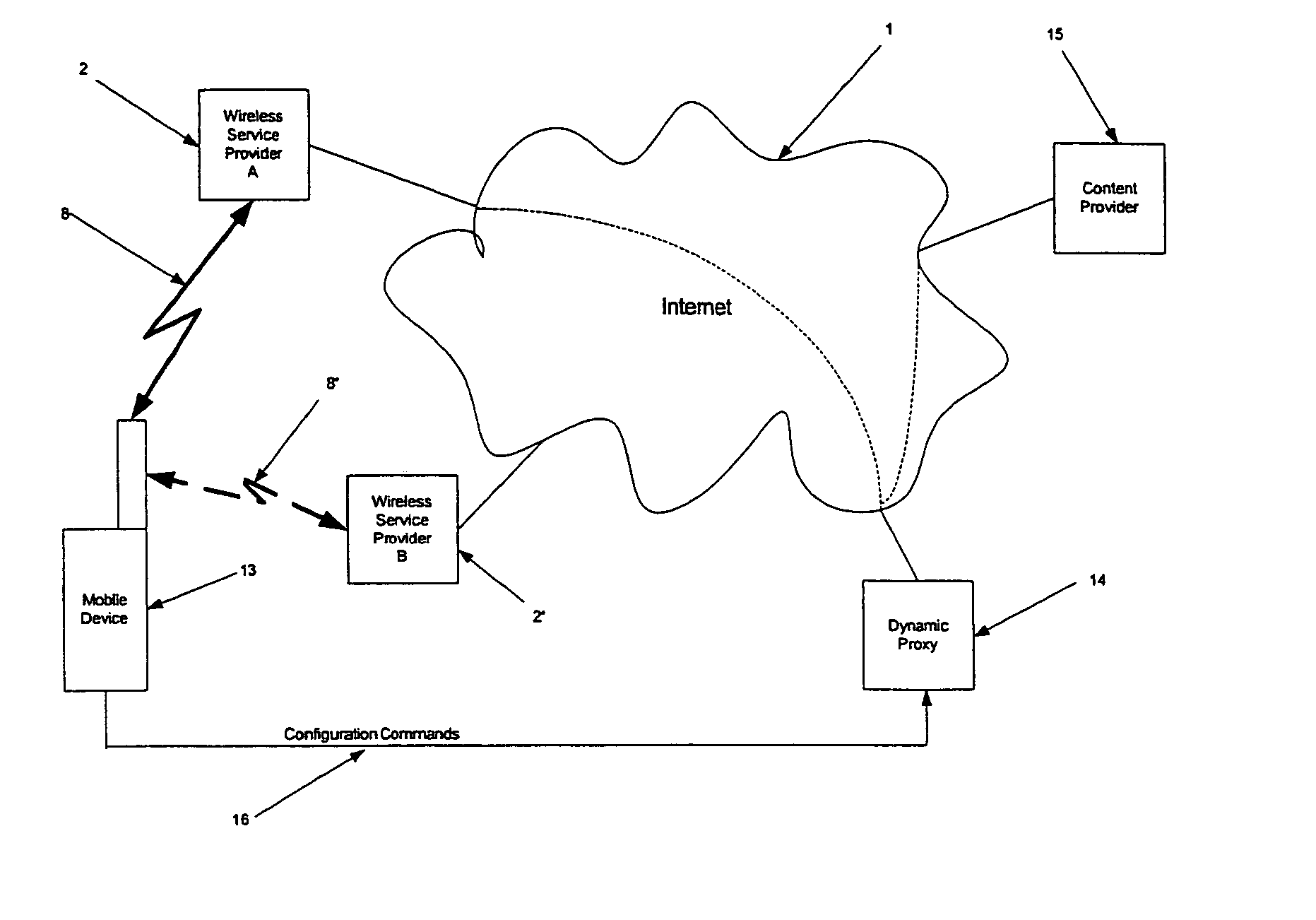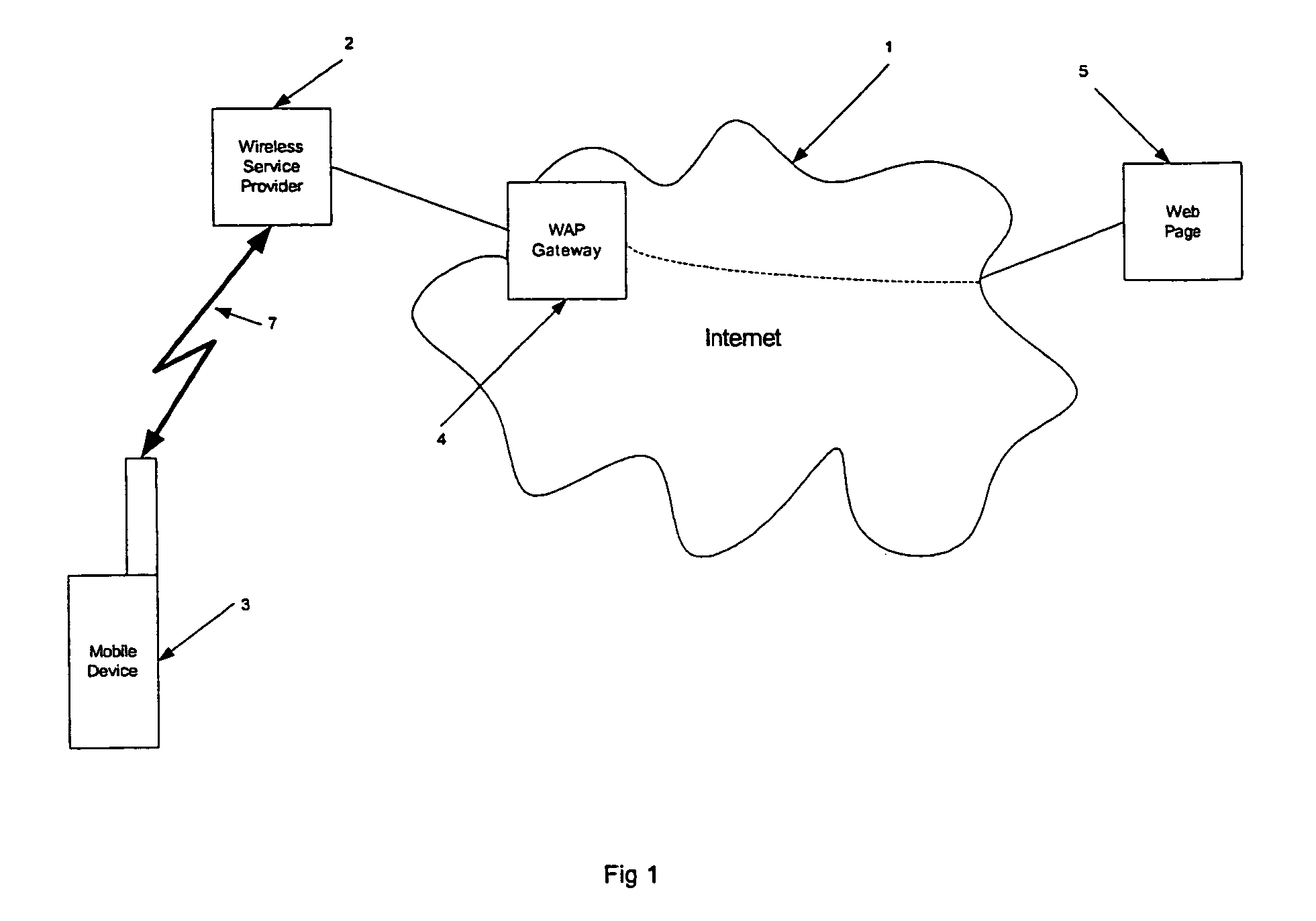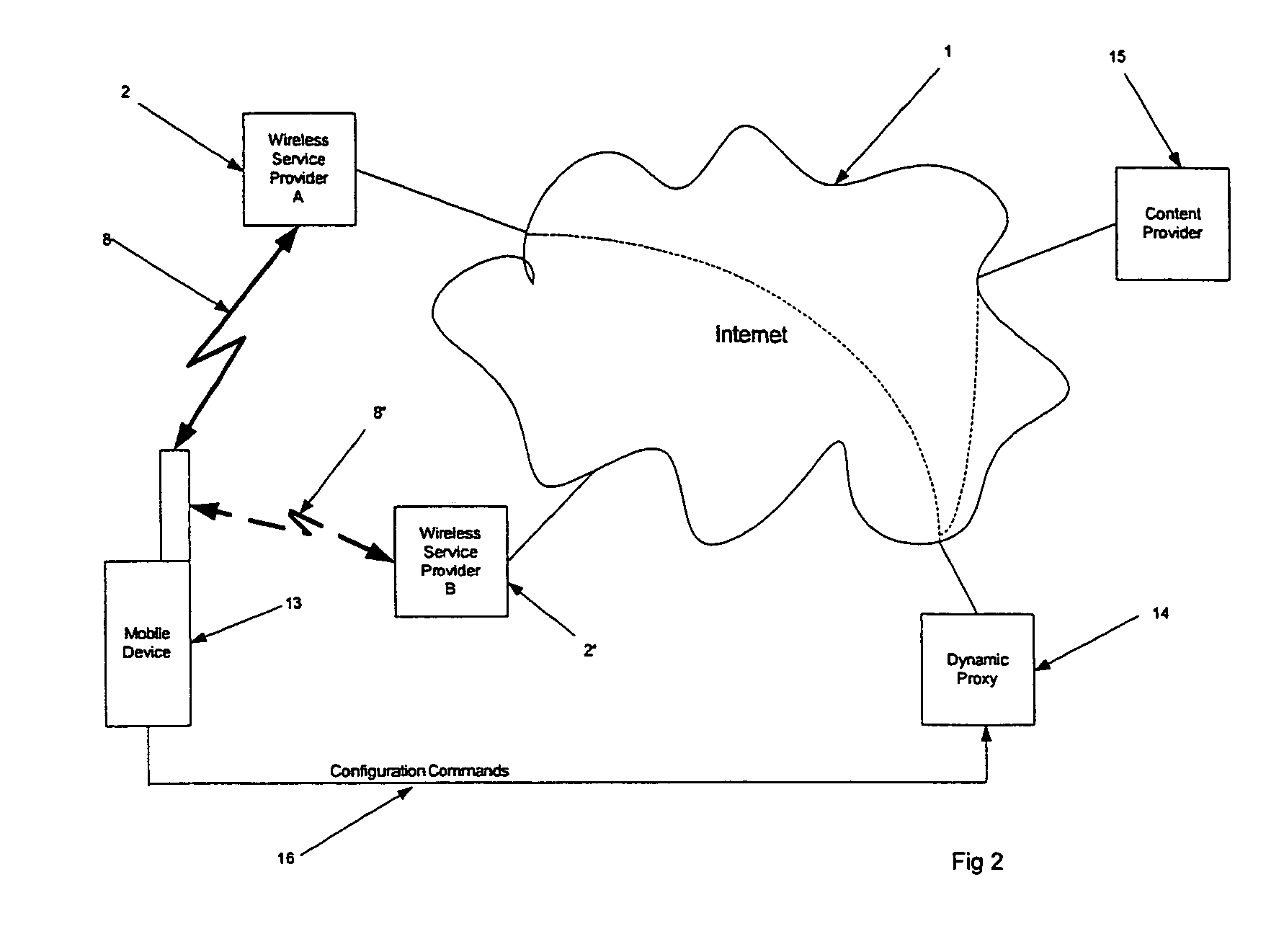Wireless terminal dynamically programmable proxies
a dynamically programmable, terminal technology, applied in the direction of data switching networks, wireless commuication services, two-way working systems, etc., can solve the problems of limited processing power and memory size, prone to errors, and the terminal cannot adequately support the above described rich media content, etc., to achieve better web content rendering, improve file transfer time, and high compression ratio
- Summary
- Abstract
- Description
- Claims
- Application Information
AI Technical Summary
Benefits of technology
Problems solved by technology
Method used
Image
Examples
Embodiment Construction
[0042]FIG. 1 shows a known type of communications system having a network 1 such as the Internet, a wireless service provider 2 connected to the network 1, and a mobile terminal 3 coupled wirelessly to the wireless service provider 2. The mobile terminal 3 is typically a mobile phone with WAP (wireless application protocol) capabilities which allow for limited retrieval of web page information from the Internet 1. The mobile terminal 3 accesses a web page 5 through the wireless service provider 2 and the Internet 1, however the web page content is transcoded by a WAP gateway device 4 into a compressed format so that this can be received and displayed by the mobile terminal 3 which has limited wireless bandwidth and display capabilities.
[0043] Such a system is limited and inflexible however, as more powerful mobile terminals are still restricted to the basic WAP service, and cannot take advantage of their greater processing capabilities for example to display different picture quali...
PUM
 Login to View More
Login to View More Abstract
Description
Claims
Application Information
 Login to View More
Login to View More - R&D
- Intellectual Property
- Life Sciences
- Materials
- Tech Scout
- Unparalleled Data Quality
- Higher Quality Content
- 60% Fewer Hallucinations
Browse by: Latest US Patents, China's latest patents, Technical Efficacy Thesaurus, Application Domain, Technology Topic, Popular Technical Reports.
© 2025 PatSnap. All rights reserved.Legal|Privacy policy|Modern Slavery Act Transparency Statement|Sitemap|About US| Contact US: help@patsnap.com



